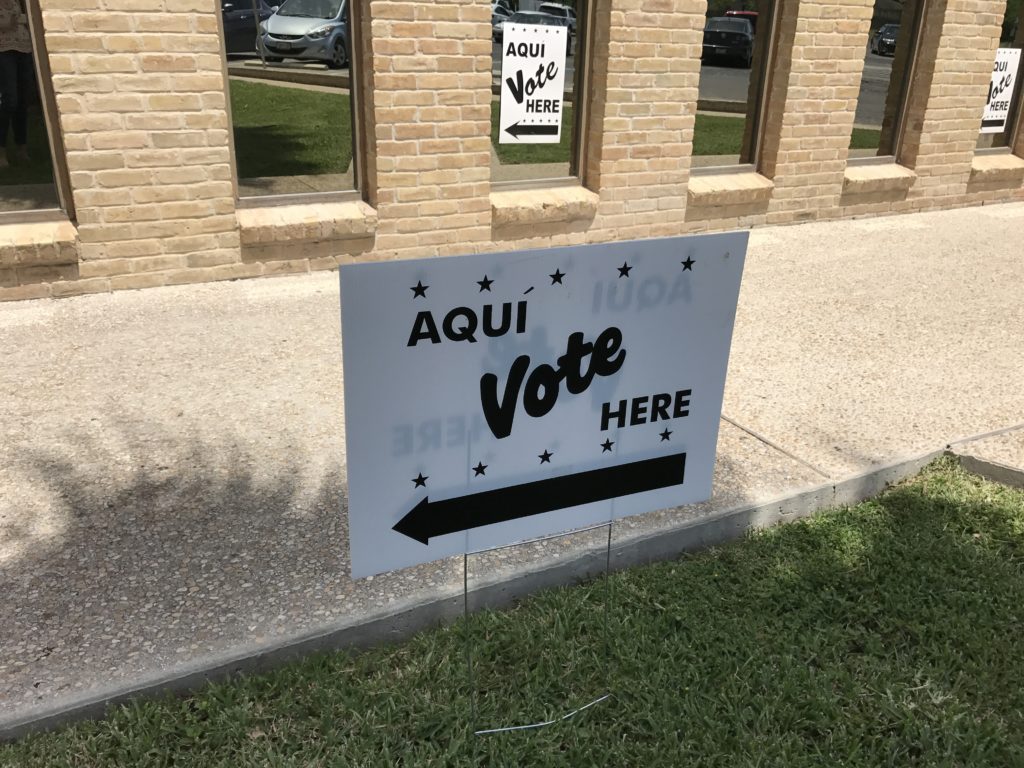Yep, it’s election season again! 2018 means midterm elections, with Federal, State, and County races on the ballot. The primary election is scheduled for March 6th, with early voting happening February 20th – March 2nd. We know that these elections can get complicated (What’s a primary again? Wait, there’s a runoff now?), so we’re helping break it down for you.
What is the primary election?
The March 6th primary election is the first round of voting for the 2018 midterm election. During the primaries, you’ll vote for candidates to represent either the Democratic or Republican party in the November midterm election. Both the primary and general midterm elections will include Federal, State, and County races.
The winner of each race for each party will proceed to the general midterm election in November. If no candidate receives a majority of the vote in the primary, the two candidates receiving the most votes will advance to a primary runoff on May 22nd. (Voters can vote in a runoff even if they didn’t vote in the primary.)
What will be on the ballot?
The primary and general midterm elections include Federal, State, and County races. When you vote in the primary, you’ll be asked if you want a Democratic or Republican ballot and will only vote on candidates from that party.
• Federal: US Senator and US Representative
• State: Governor, Lieutenant Governor, Attorney General, Comptroller of Public Accounts, Commissioner of the General Land Office, Commissioner of Agriculture, Railroad Commissioner, State Supreme Court Justices, Judges of the Court of Criminal Appeals, Justices of the Court of Appeals, District Judges, Criminal District Attorney, and State Representative
• County: County Judge, County Court at Law Judges, County Probate Court Judges, District Clerk, County Clerk, County Commissioner, and County Chair (for your respective party)
You will also vote on propositions drafted by the party. These yes/no questions will help shape the party platforms and inform party leadership—they are not amendments to the Constitution or any laws. Click here to see your individual sample ballot.
Do I get to choose a Democratic or Republican ballot?
Yes—you can choose your party ballot when you go to vote. Your party affiliation and voting history don’t matter. When you vote in the general election in November, you don’t have to vote for the same candidates or party. (While there are other political parties, the Democratic and Republican parties are the only parties holding Texas primaries.)
When is the 2018 primary election?
Election Day is Tuesday, March 6th, 2018. Election Day voting hours are 7:00 am – 7:00 pm. The Early Voting period for the 2018 primary election is Tuesday, February 20th – Friday, March 2nd.
Early voting hours:
Tuesday, February 20th – Friday, February 23rd: 8:00 am – 6:00 pm
Saturday, February 24th: 8:00 am – 8:00 pm
Sunday, February 25th: 12:00 pm – 6:00 pm
Monday, February 26th – Friday, March 2nd: 8:00 am – 8:00 pm
Where do I vote?

On Election Day, you must vote in your assigned precinct—determined by the address of your current voter registration. During Early Voting, you can vote at ANY polling location. Click here to find your polling location. Click here to see all early voting locations.
What do I need to bring?
The short answer: if you have a Texas or US photo identification (can be expired up to 4 years), bring that. The long answer: if you don’t have government-issued photo identification available, you can show another form of identification and sign a verified declaration at your polling place. See more details here.
How do I register to vote?
The deadline to register to vote in the March 6th primary has already passed, but you can register now to be eligible to vote in the general November 6th election! Click here to get a voter registration application. Click here to find out if you’re already registered.
What if my voter information doesn’t match my identification?
The address on your identification does NOT have to match your address on your voter registration information. If your name does not exactly match your name on your voter registration information, election officials will review your identification, and if your name is “substantially similar,” you’ll be allowed to vote (but required to submit an affidavit stating you are the same person on the official list of voters).
What if I can’t vote in person?
If you won’t be in Bexar County for Early Voting or Election Day; are 65 years or older; are disabled; or confined in jail but otherwise eligible to vote, you can vote early by mail. Applications must be received by February 23rd. Mail-in ballots must be received by 7:00 pm on March 6th (if not postmarked) or received by 5:00 pm on March 7th if postmarked by 7:00 pm on March 6th. Click here to get an application for a mail-in ballot. (Click here for Spanish.)
How can I get to my polling location?
VIA Metropolitan Transit offers free rides on Election Day! Just show your voter registration card when you board.

